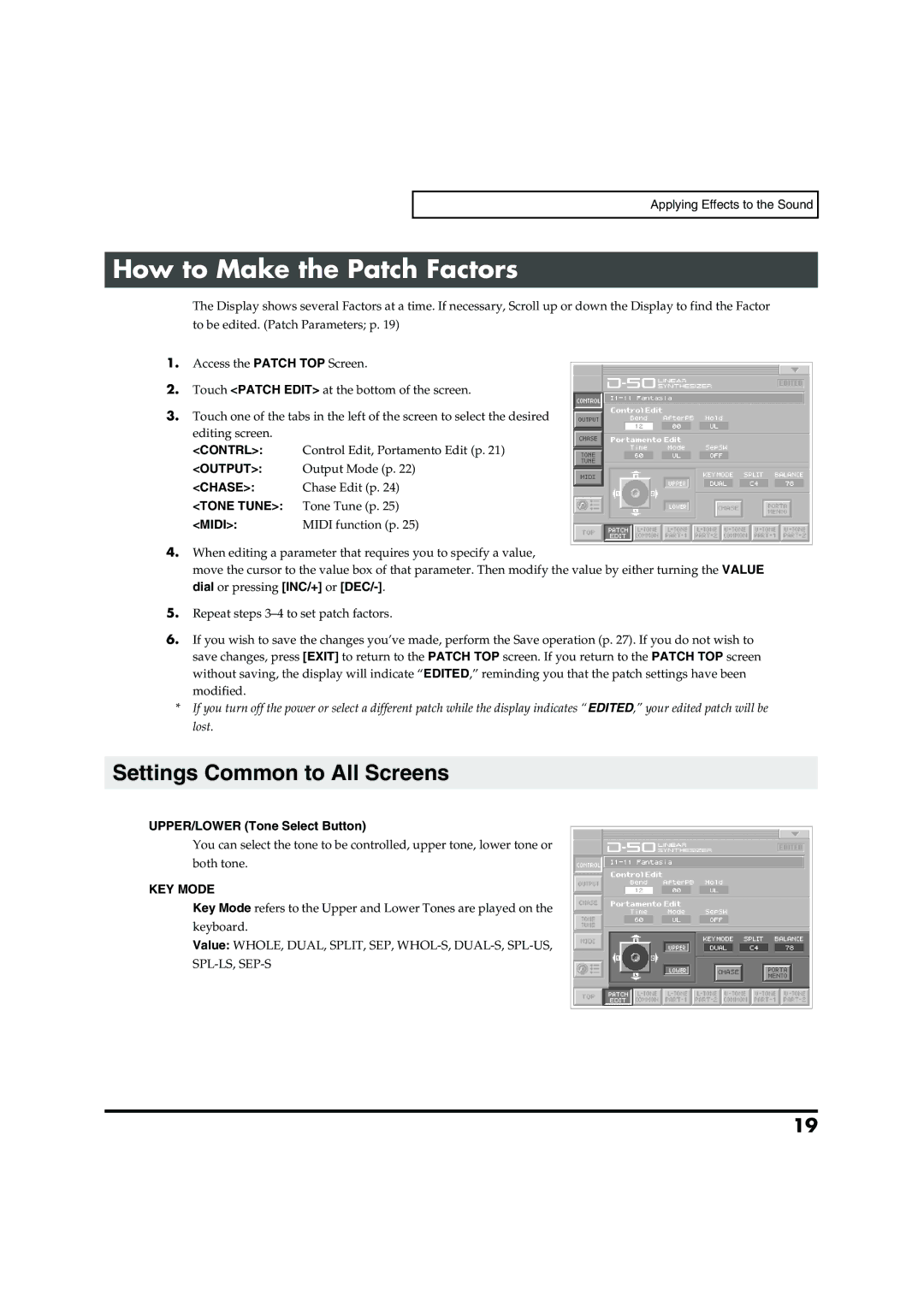
Applying Effects to the Sound
How to Make the Patch Factors
The Display shows several Factors at a time. If necessary, Scroll up or down the Display to find the Factor to be edited. (Patch Parameters; p. 19)
1.Access the PATCH TOP Screen.
2.Touch <PATCH EDIT> at the bottom of the screen.
3.Touch one of the tabs in the left of the screen to select the desired editing screen.
<CONTRL>: Control Edit, Portamento Edit (p. 21)
<OUTPUT>: Output Mode (p. 22)
<CHASE>: | Chase Edit (p. 24) |
<TONE TUNE>: | Tone Tune (p. 25) |
<MIDI>: | MIDI function (p. 25) |
4.When editing a parameter that requires you to specify a value,
move the cursor to the value box of that parameter. Then modify the value by either turning the VALUE dial or pressing [INC/+] or
5.Repeat steps
6.If you wish to save the changes you’ve made, perform the Save operation (p. 27). If you do not wish to save changes, press [EXIT] to return to the PATCH TOP screen. If you return to the PATCH TOP screen without saving, the display will indicate “EDITED,” reminding you that the patch settings have been modified.
*If you turn off the power or select a different patch while the display indicates “EDITED,” your edited patch will be lost.
Settings Common to All Screens
UPPER/LOWER (Tone Select Button)
You can select the tone to be controlled, upper tone, lower tone or both tone.
KEY MODE
Key Mode refers to the Upper and Lower Tones are played on the keyboard.
Value: WHOLE, DUAL, SPLIT, SEP,
19
